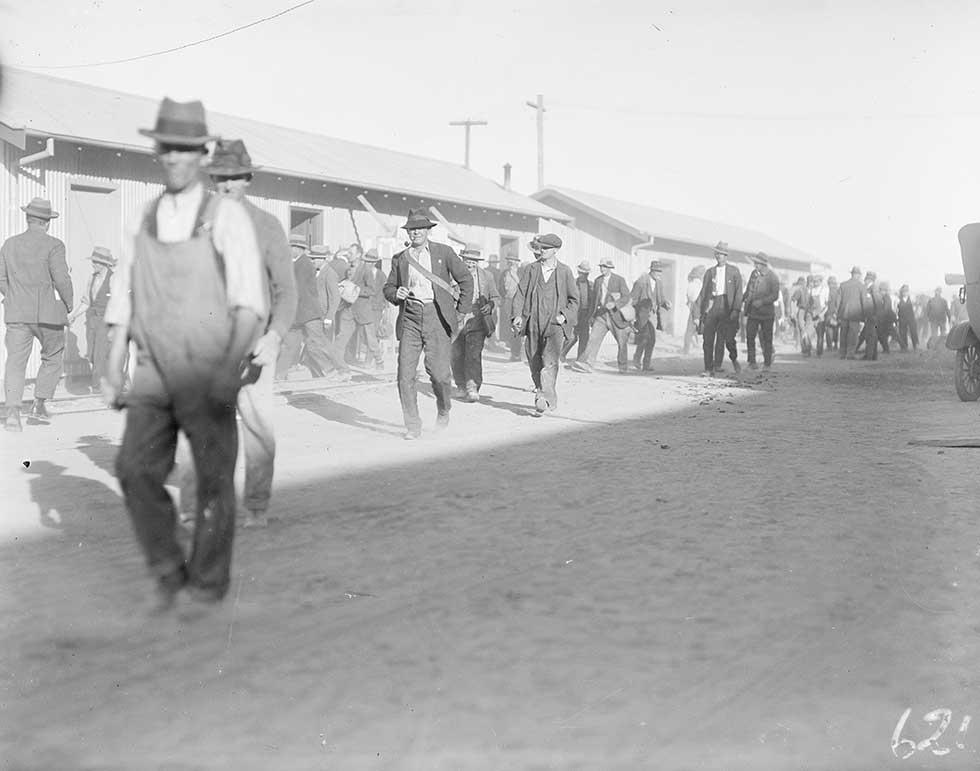


About this record
This is a black-and-white photograph showing a crowd of workers walking from the Parliament House depot on an unpaved road as they leave work for the day. Some are wearing suits, others overalls, and almost all have hats.
Educational value
- Shows a range of workers employed to build the provisional (Old) Parliament House, with some of the men pictured (those wearing suits) likely to have been supervisors, and others likely to have been bricklayers and labourers – there had been a shortage of tradesmen during World War I and, to attract workers to Canberra, the Federal Capital Commission offered good wages and developed barrack-style accommodation for single men and built brick cottages for married men to rent.
- Probably shows workers who moved to Canberra to gain employment in the construction of the city – in 1911, when the area was chosen as the site of Australia's capital city, the district's population was 1714 people, living in a rural grazing area; the population grew to 2500 by 1922 and doubled soon after the building of the provisional Parliament House commenced the following year; people from as far away as Brisbane, Hobart and Perth moved to Canberra to work on the building; as there was a policy of employing only those who lived in the ACT, many who lived in the neighbouring town of Queanbeyan in New South Wales also moved to Canberra.
- Depicts clothing worn by workmen during the 1920s – almost every man is wearing a hat, which is typical of the era, and the man closest to the camera is wearing a waistcoat and white shirt under his overalls.
- Illustrates temporary buildings at the Parliament House depot (worksite) – structures such as the two corrugated iron sheds depicted were part of the storage area used during construction, and are likely to have contained tool rooms and offices for supervisors.
- Is an example of the photography of William James Mildenhall – born in 1891 and appointed to the Commonwealth Public Service in 1906, Mildenhall was a keen amateur photographer chronicling the progress of Canberra's construction; he began his official photographic work in 1926.
Acknowledgments
Learning resource text © Education Services Australia Limited and the National Archives of Australia 2010.
Related themes
Need help with your research?
Learn how to interpret primary sources, use our collection and more.



